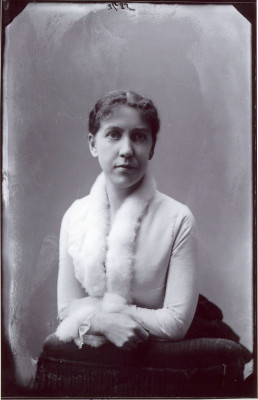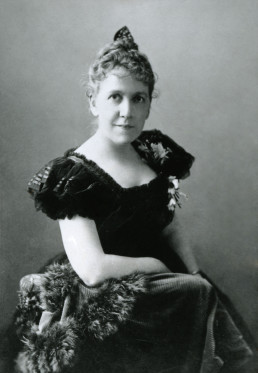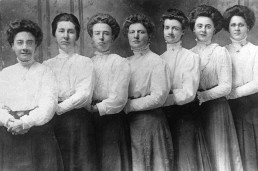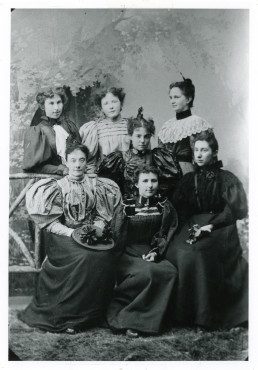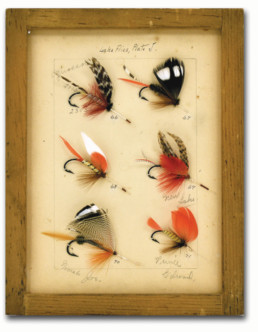Mary Orvis Marbury
(1856–1914)
Marbury circa 1870.
Born Mary Ellen Orvis in the southern Vermont town of Manchester, Marbury was the oldest child and only daughter of Charles F. Orvis. The year of her birth, Charles Orvis founded the C. F. Orvis Company, now known as the Orvis Company, and established a shop selling fly-fishing rods and flies made by the company.
Marbury graduated from the local high school in 1872. Shortly after that she expressed an interest in fly tying, so Orvis brought New York City fly tier John Hailey to Vermont to give tying instruction. As a student Marbury did well, and four years later, in 1876, she became the manager of the company’s fly-tying operations. That same year she won first prize for an exhibit of flies at the Centennial Exposition in Philadelphia.
Under Marbury’s watch, the fly-tying department comprised local women hired through newspaper ads. There were usually between five and seven women in the department, but occasionally they would increase to ten workers. All of the women were trained by Marbury and, because American entomology was in its infancy, the patterns she taught were based on British styles that were slightly changed to suit angling in this country.
By 1890, the company was tying and selling more than 400 different fly patterns. Although many of the patterns had the same name, they varied in looks. Charles Orvis felt that it was time to create a fly-pattern standard for fishing in North America. He sent hundreds of letters to customers, friends, and other anglers asking about patterns used in different regions. It was Marbury who was put in charge of compiling the responses and creating a book that would set the standard for name and pattern according to location. The landmark Favorite Flies and Their Histories was published in 1892. By 1896, there had been nine printings.
Favorite Flies and Their Histories outlines a description, history, and color plate of two hundred ninety-one patterns from Canada, thirty-six states, and two territories (Arizona and Utah). (Absent were the states of Alabama, Arkansas, Kansas, Nebraska, North Carolina, North Dakota, South Carolina, and South Dakota.) Marbury acknowledged that the patterns were based on British tying and that one day information about American flies would need to be compiled.
To complement the book and to represent the C. F. Orvis Company at the 1893 Chicago Columbian Exposition, Marbury assembled hinged fly panels for public viewing. These panels would one day become the inspiration for the founding of the American Museum of Fly Fishing.
In 1904, Mary Orvis Marbury stopped managing the fly-tying operations at Orvis. Many believe that she gave up her position because of the untimely death of her son John earlier that year. Her sister-in-law, Anna Orvis, became the next manager. Marbury did not give up fly tying altogether, though—the last woman she trained for the company was Hallie Thompson in 1910. Marbury continued to live in Manchester until her death in 1914.


